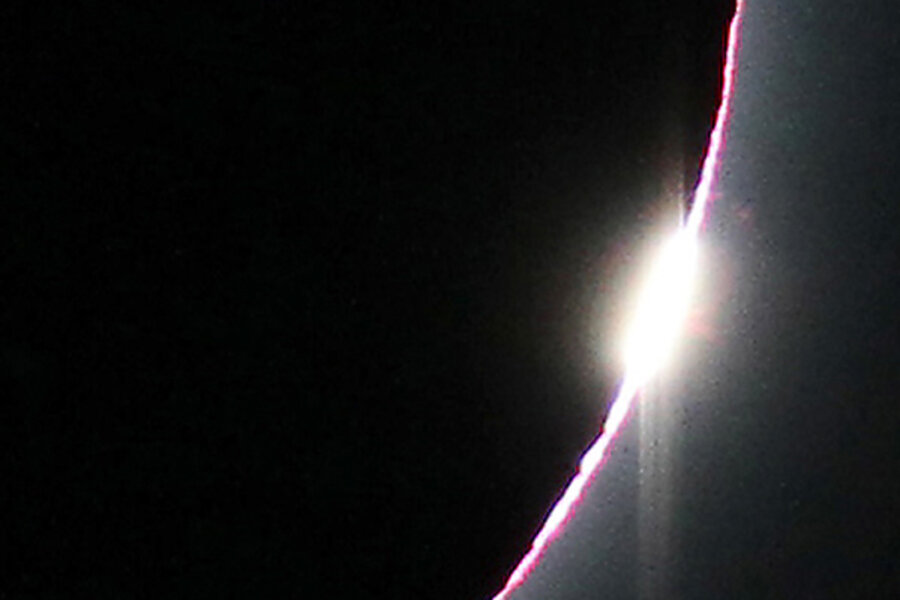Where can today's total solar eclipse be seen?
Loading...
The skies over a slice of northern Australia will darken for a few minutes today as the planet experiences its first total solar eclipse in more than two years.
Today's total solar eclipse — the first since July 2010 and the last until March 2015 — begins at 3:35 p.m. EST (2035 GMT) today, which corresponds to shortly after dawn Wednesday (Nov. 14) local time in Australia. Weather permitting, will be visible from slivers of the continent's Northern Territory and state of Queensland, as well as a large, empty stretch of the Pacific Ocean.
More than 50,000 spectators are expected to watch the celestial event from Queensland, according to tourism officials. But forecasts of cloudy weather may put a damper on their viewing experience, according to media reports.
Most of the world's population will be far from the eclipse's path. But anyone with access to the Internet can follow the action live, for several organizations will provide free webcasts of the alignment of sun and moon. Two such outfits are Tourism Tropical North Queensland and the Slooh Space Camera, which will begin their broadcasts at 1 p.m. EST (1800 GMT) and 2:30 p.m. EST (1930 GMT) on Tuesday, respectively.
You can watch both webcasts of the total solar eclipse live here at SPACE.com.
The shadow's path
Tuesday's total eclipse of the sun will begin over the Arnhem Land region of the Northern Territory, where the moon's shadow will touch down at 3:35 p.m. EST (2035 GMT). [Video: Watch Path of Nov. 13-14 Total Solar Eclipse]
From there, the eclipse path moves southeast across the Gulf of Carpentaria to Queensland, darkening the skies over towns such as Mitchell River and Palmerville before reaching the coastal city of Cairns at 3:39 p.m. EST (2039 GMT).
Many eclipse chasers are converging on Cairns, a tourist hotspot on Queensland's northeast coast. The world-famous Great Barrier Reef lies just offshore, and patches of tropical rainforest draw visitors inland as well.
Shortly after sunrise, skywatchers in Cairns will witness a total solar eclipse lasting two minutes. The obscured sun will be just 14 degrees above the horizon at the time, researchers say. (Your clenched fist held at arm's length measures about 10 degrees.)
From Cairns, the moon's shadow will cruise out into the vast Pacific Ocean, with the total eclipse finally petering out 610 miles (980 kilometers) west-northwest of Santiago, Chile, at 6:48 p.m. EST (2348 GMT). The eclipse's path of totality is about 108 miles (174 km) wide and covers 9,000 miles (14,500 km) over a three-hour period.
Warning: If you are planning to watch the total solar eclipse in person, be extremely careful. Never look directly at the sun, either with the naked eye or through telescopes or binoculars without the proper filters. To safely view solar eclipses, you can purchase special solar filters or No. 14 welder's glass to wear over your eyes. Standard sunglasses will NOT provide sufficient protection.
An unforgettable experience
Observers in parts of Asia, the Pacific and western North America were treated to a "ring of fire" annular eclipse this past May.
The next total solar eclipse occurs in March 2015 and will be visible from some areas in the North Atlantic region, such as Norway's Svalbard Islands. However, a so-called "hybrid" eclipse — which shifts between total and annular at different points on the globe — will come to parts of the Atlantic and central Africa in November 2013.
Observing an eclipse is a special experience most skywatchers — and scientists — never forget. Tuesday's event will be the 56th solar eclipse that Williams College astronomer Jay Pasachoff has seen in his career, for example, but he still finds each one thrilling.
"Oh, each one is very exciting — each in its own way," Pasachoff told SPACE.com via email. "It is very wonderful to be uncovering part of the mysteries about the sun's atmosphere and magnetic field, and to be outdoors surrounded by the darkening of a solar eclipse is a primally fabulous experience."
The eclipse isn't the only celestial treat skywatchers can look forward to this week. The annual Leonid meteor shower, which has produced some truly spectacular shows over the years, peaks overnight Saturday (Nov. 17).
Editor's note: If you are along the eclipse path in Australia or elsewhere and snap an amazing photo of Tuesday's total solar eclipse that you'd like to share for a possible story or image gallery, please send images, comments and location information to managing editor Tariq Malik at tmalik@space.com.
Follow SPACE.com senior writer Mike Wall on Twitter @michaeldwall or SPACE.com @Spacedotcom. We're also onFacebook and Google+.







